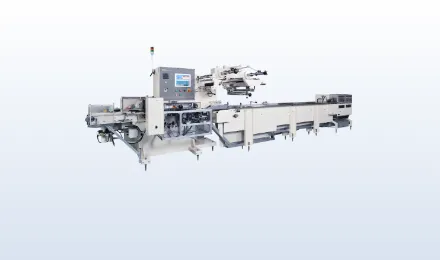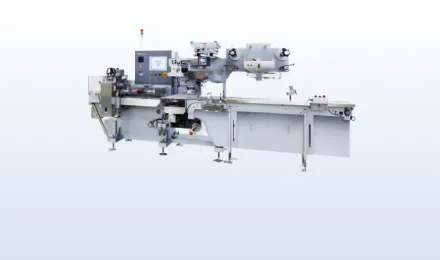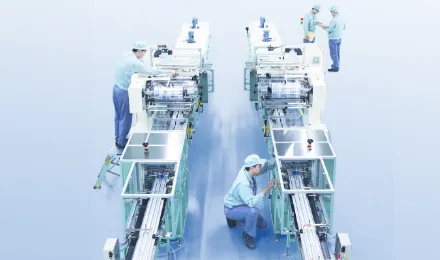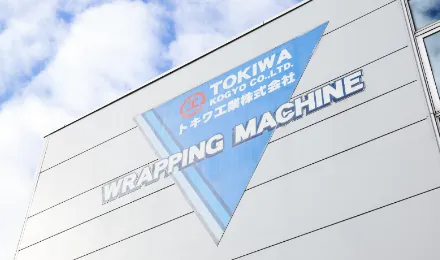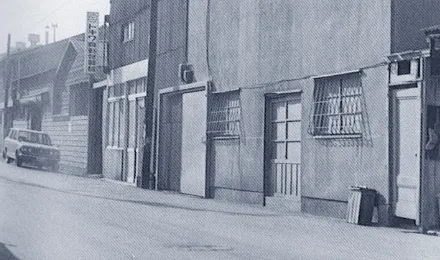This machine receives loose noodles fed from a weighing device into a timing hopper on the infeed conveyor, aligns any unevenness in the direction of the noodles using a noodle alignment device, and performs electrostatic elimination. It then wraps the noodles in a pillow shape using a specified film. Additionally, it is capable of handling both loose noodles and bundled noodles, resulting in it being able to accommodate a wider range of materials.
Target Products
- bundled noodles
- Loose Noodle
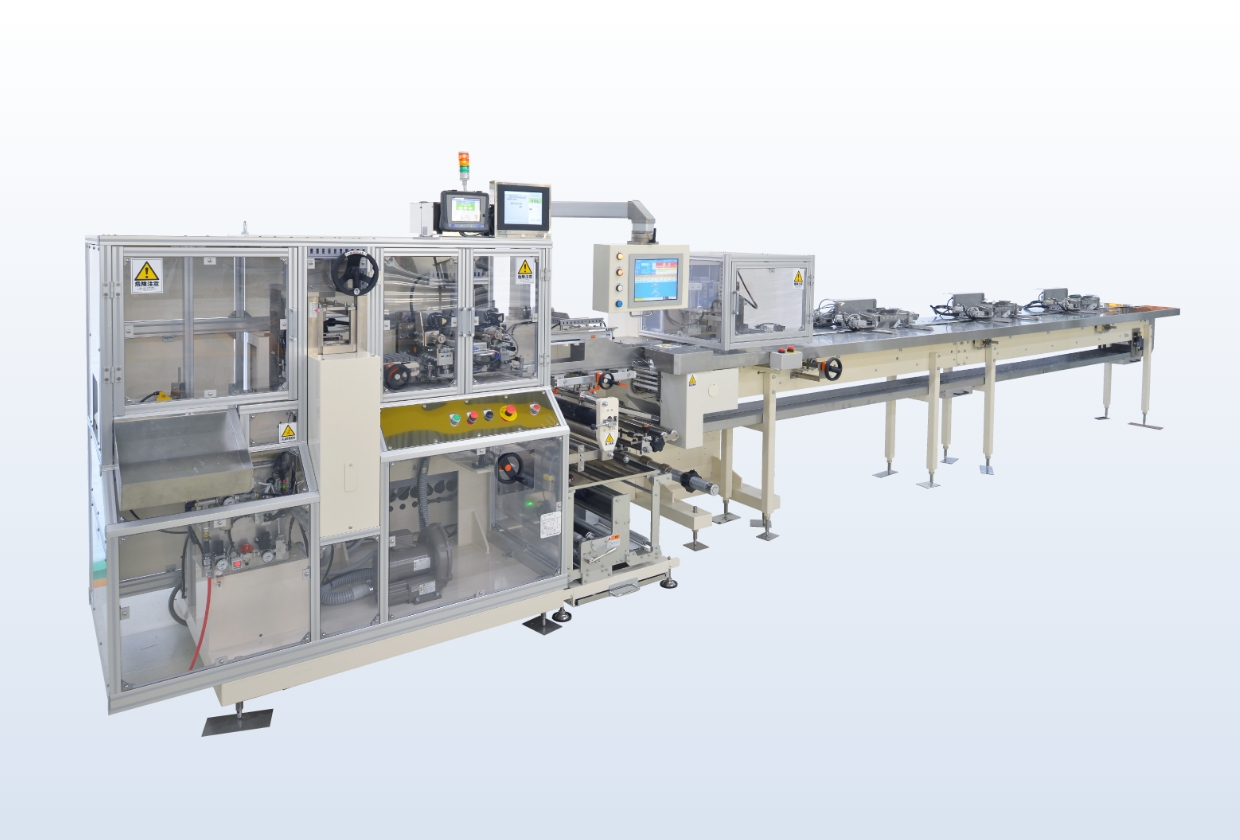
feature
-
feature
We have installed a special conveyor designed specifically for loose noodles to prevent them from spilling or breaking during transport.
-
feature
The width of the infeed conveyor can easily be adjusted with the handle so it is appropriate for the volume of noodles.
-
feature
Safety and operability during setup have been improved by including a switch to stop the end sealer independently as standard equipment.
Examples of Uses
Loose Noodles
Loose noodles can be wrapped according to their volume and various types. The machine configuration has been specially designed by Tokiwa to prevent the noodles from becoming jammed and to keep them from scattering during wrapping.

Bundled Noodles
Bundled noodles can be wrapped according to the bundle quantities and noodle types. The machine configuration has been specially designed by Tokiwa to prevent noodles from becoming jammed during wrapping and to ensure that the bundled noodles do not come apart.

Product Specifications
- Packaging Capacity
- MAX. 90 packs/minute (with 2 timing hoppers)
- Power consumption
- 3-phase 200V 6.0kW
- Cut size
- 80-500 mm
Selection Options
Box Motion
Unlike conventional rotary sealing methods, the sealer moves around the box, allowing for longer sealing pressure time. This results in significantly improved sealing performance compared to rotary sealing methods. This method is widely used for food packaging that requires inert filling or oxygen absorber sealing.
Hermetic Sealer (End Sealer)
Compared to conventional box motion-type end sealers, rotary-type hermetic end sealers enable high-speed sealing. Compared to conventional rotary sealers, longer sealing times improve sealing performance, enabling a maximum of 300 packs/min.
Stretch Conveyor (Tubing Conveyor, Discharge Conveyor)
The conveyor slide type is adopted for conveyors before and after the rotary sealer. This ensures seal strength while reducing the load collapse of products that are prone to collapsing or are in multi-pack wrapping.
Auto Film Splicer
As wrapping continues, the film will eventually run out. Normally, wrapping is temporarily stopped at this point, a new roll of film is loaded, and the process is restarted. The film splicer is a device that automatically attaches the end of the used film to the beginning of the new film by preloading a new roll of film into a separate film holder. By adopting a film splicer, there will be no need to temporarily interrupt packaging for film replacement, thereby improving production efficiency. Depending on the type of film, there are two options: the tape seal type, which connects using double-sided tape, and the heat seal type, which obviates the cumbersome application of tape and instead uses heat sealing for single-film or double-sided adhesive films.
Film Center Adjustment Device
It automatically detects film skew and stabilizes long sealing. Combining it with a splicer enables even higher productivity.
Adjustable Forming Box
The height and width can easily be adjusted, eliminating the need to change the bagging machine when switching product types, which saves time and allows for a wide variety of products to be wrapped.
Various Knives
Various knives are available to select the cut for the opening, which makes the product easier to open.
Printer
It prints the date of manufacture and expiration date according to the intended use. An inkjet inspection device can also be installed, and depending on the type of printer, it can check for blurred characters and printing errors.
Noodle Jam Detection Device
It detects noodles that have become jammed in the sealing section of the long and end sealers and ejects them.



